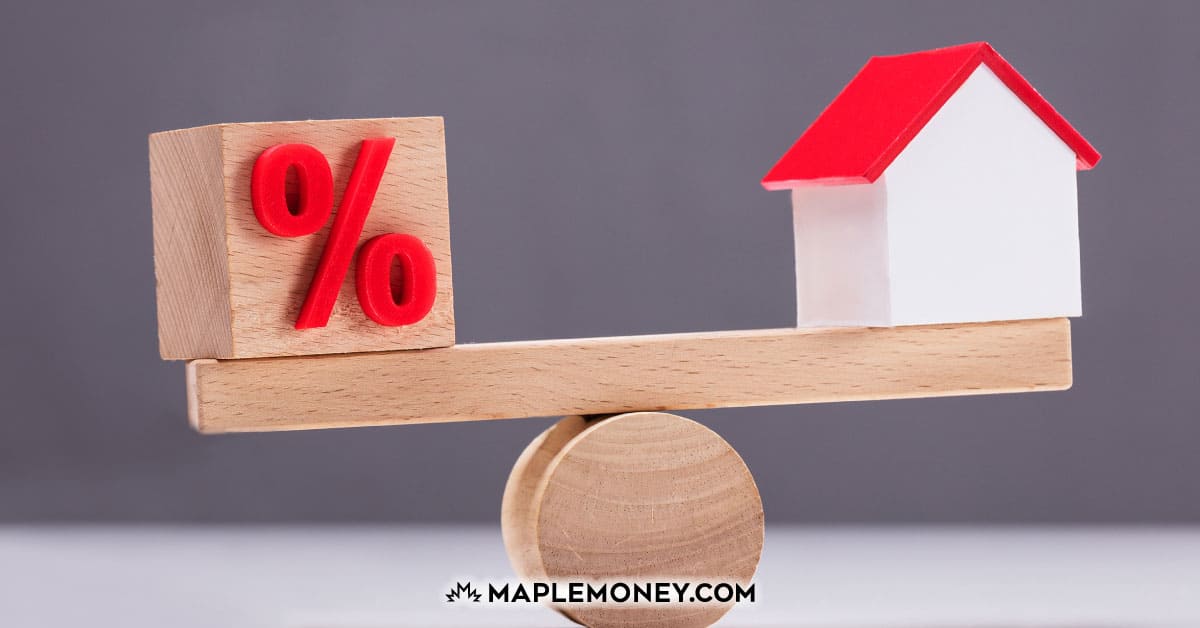What Is a High Ratio Mortgage: What You Need to Know About Mortgage Default Insurance

Understanding how mortgages work can be challenging. That’s why we leave the details to the professionals, isn’t it? But as the saying goes, ‘knowledge is power,’ which is why never hurts to brush up on a little knowledge from time-to-time.
In this article, we’re taking a close look at the high ratio mortgage. I’ll let you know what it is, how it works, and how it compares to a conventional mortgage.
What Is a High Ratio Mortgage?
A high ratio mortgage is one where the loan-to-value is higher than 80%. In other words, the home buyer is putting a down payment of less than 20% on the purchase of a home. Any qualifying borrower can take out a high ratio mortgage in Canada. You don’t have to be a first-time home buyer, although high ratio mortgages are most common with first-timers.
When a home buyer takes out a high ratio mortgage, the mortgage must include mortgage default insurance, commonly referred to as CMHC insurance. Let’s take a closer look at how mortgage default insurance works, and why it exists in the first place.
How Mortgage Default Insurance Works
As I mentioned previously, mortgage default insurance is required whenever a home buyer has a down payment of less than 20%. However, the insurance doesn’t cover the borrower, It protects the mortgage lender against default, should the borrower stop making mortgage payments.
While the lender is the one covered by default insurance, the cost of the premiums is paid by the mortgagor, as a percentage of the overall mortgage amount. The insurance premium, or CMHC premium, can be paid in full at the time of closing but is almost always included in the mortgage financing. The cost of the premium varies depending on the mortgage amount and the percentage down payment.
Here is an example using a $300,00 home purchase price and a 5% down payment:
House Purchase Price = $300,000
5% Down Payment = $15,000
Mortgage amount $285,000 X 4.00% = $11,400 (CMHC premium)
Total mortgage amount (incl. default insurance premium): $296,400
Mortgage Default Insurance Premiums
Here is a complete list of insurance premiums, based on various loan-to-value amounts. As you can see, the more you put down on a house, the lower the insurance premium.
Loan-to-Value Premium on Total Loan
Up to and including 65% .60%
Up to and including 75% 1.70%
Up to and including 80% 2.40%
Up to and including 85% 2.80%
Up to and including 90% 3.10%
Up to and including 95% 4.00%
Further to our earlier example, if you were to put a down payment of 10% on your home purchase, the CMHC premium would drop from 4.00% to 3.10%. A down payment of 15% would result in a premium of 2.8% being charged.
Why Do We Need Mortgage Default Insurance?
If mortgage default insurance didn’t exist, mortgage lenders would be far less willing to shoulder the risk of low-equity mortgages. The result would be a sharp decrease in home affordability in Canada, with lenders demanding larger down payments on all home purchases.
In fact, a desire for affordable housing is how mortgage default insurance came to be in the first place. At the end of World War II, the Canadian government was worried that there would not be enough housing to account for the influx of returning soldiers and their families.
In 1946, the Central Mortgage and Housing Corporation (CMHC) was launched as a crown corporation, to oversee the National Housing Act and the Home Improvement Loans Guarantee Act. Over the years, their mandate was expanded to ensure affordable housing for all Canadians, including the introduction of a ‘5% down payment’ in 1999. Today, CMHC manages assets exceeding $250 billion dollars.
In addition to CMHC, two other entities provide mortgage default insurance – GEMICO and Canada Guaranty.
Qualifying for a High Ratio Mortgage
When you apply for a high ratio mortgage, your application must be reviewed and approved by two parties: your mortgage lender, and the insurer (CMHC). There are specific criteria that must be met to qualify for a high ratio mortgage:
- A maximum mortgage amortization period of 25 years
- 10% down payment on the mortgage amount between $500,000 and $999,000. (5% on the first $500,000, and 10% on the remaining balance).
- Home purchases over $1,000,000 are not CMHC-eligible.
High Ratio vs. Conventional Mortgage
You may be wondering what happens if your down payment is 20% or more. After all, it’s no longer considered a high ratio mortgage. At this point, the mortgage is considered conventional. The default insurer is no longer involved, and the lender assumes 100% of the mortgage loan risk. Of course, when a home buyer is putting that much skin in the game, the odds of default decrease significantly.
If you are able to save 20% or more and take out a conventional mortgage, it will save you money in the long run. Not only will you avoid the costly insurance premium, but your overall mortgage amount will be smaller, meaning lower interest costs.
But not everyone can afford that level of down payment, especially younger, first-time homebuyers who are often near the beginning of their working lives. Also, if you live in an area with an expensive housing market, like Toronto or Vancouver, even a 5% down payment can seem like a stretch.
High Ratio Mortgages vs. Conventional Mortgages: Product Features
Now that you understand the basic differences, let’s take a closer look at the other features of high ratio (CMHC) and conventional mortgages:
High Ratio Mortgage
- Less than 20% down payment
- Maximum amortization of 25 years
- Slightly lower mortgage rates than conventional (5-year fixed)
- Insurance premium charged upfront, financed with the mortgage
- There is a specific set of qualifying criteria (credit beacon score, debt servicing)
- Ineligible on mortgages over $1,000,000
Conventional Mortgage
- Applies to mortgages with a down payment of 20% or higher.
- Amortizations can be as high as 30 years.
- No insurance premium is charged
- May have higher setup costs than high-ratio
- Approval criteria are set by the mortgage lender (rather than insurer)
- Available on mortgages over $1,000,000
High Ratio Mortgage Rates
One benefit to a high ratio mortgage is that your interest rate will be lower than a conventional mortgage. This can negate some of the added expense of the CMHC premium. Depending on where you live in Canada, high ratio mortgage rates might vary slightly. For example, you may be offered a slightly lower rate in Toronto than you would, say, if you lived in Halifax.
Final Thoughts on High Ratio Mortgages
After reading this article, you may be wondering if you should consider a high ratio mortgage, even if you have enough money for a 20% down payment. The answer to this question really depends on your individual situation.
The CMHC premiums charged on high ratio mortgages are costly, resulting in higher interest costs over the long run. But with interest rates at all-time lows, you may be better off allocating additional funds in other areas, like an emergency fund or paying down high-interest debt. If neither is a concern, I recommend trying to qualify for a conventional mortgage, knowing that it isn’t a reality for most first-time homebuyers.


